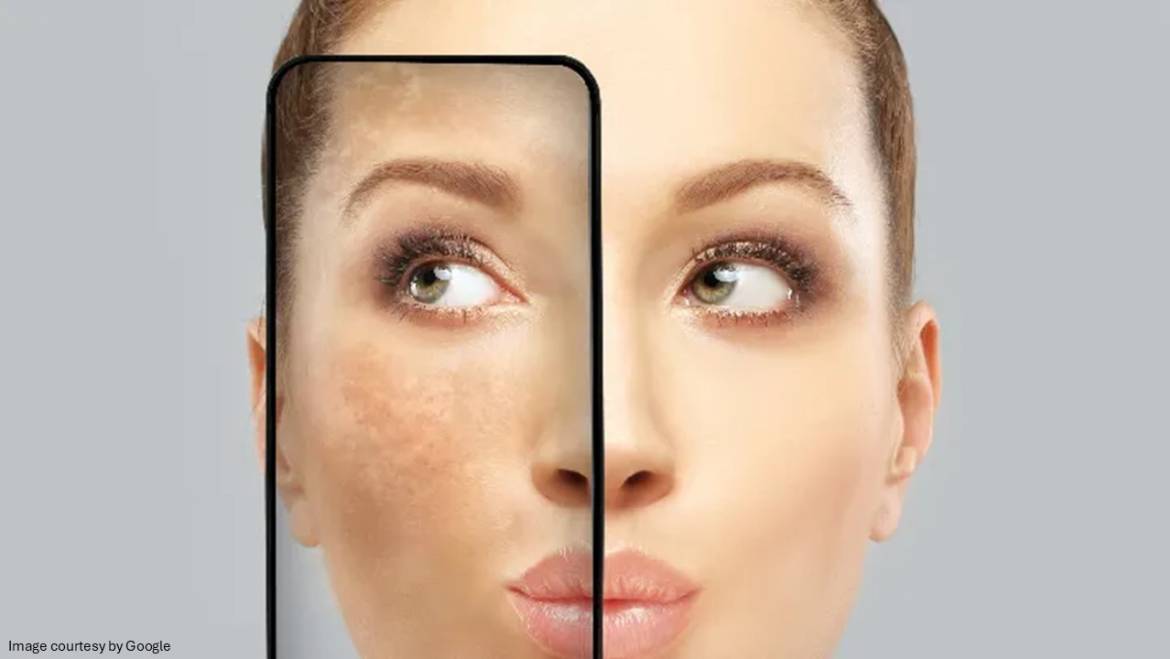Black-brown spots on the face can be uncomfortable at times, especially when you have to go out to meet friends, clients, colleagues, or simply when you are required to present yourself at any social gathering. These black and brown spots are darker than your natural skin tone, which can make you uncomfortable. This page will discuss these annoying spots and patches, as well as how to get rid of them.
What is melasma?
Melasma is a common skin problem that can appear as flat or freckle-like patches and spots. Melasma spots can affect any part of the skin exposed to sunlight, but they typically appear on the face (including the forehead, cheeks, nose, upper lip, and chin), as well as on the neck, back, and forearms. These marks are often referred to as the “pregnancy mask” as well. These spots typically darken and lighten over time, often worsening during the summer and improving in winter. Melasma, also known as chloasma (less commonly). Though this skin disorder is not life-threatening, its severity could largely affect self-confidence and self-consciousness in some people, which can directly affect their lives.
These dark patches can persist on the skin for years if left untreated.
Who is at risk of getting melasma?
Melasma is a common skin problem, especially among pregnant women. Research shows that about 15 to 50% pregnant women experience it. Approximately 2% to 33% of the female population may develop melasma more often during their reproductive years, around the ages of 20s and 40s. Women with fair skin complexions are less likely to be affected by this skin problem compared to those with darker brown skin.
Women are more likely to develop melasma than men; a study reveals that the ratio of women to men developing melasma is approximately 9:1. Pregnant women are at a higher risk of getting melasma than anyone else. If you take contraceptive pills or hormones, you will likely experience it more.
What happens when melasma targets the skin?
Our skin consists of three layers: the epidermis (the outermost layer), the dermis (the middle layer), and the subcutis (the deepest layer). Our skin protects muscles, bones, organs, and everything else from moisture, cold, germs, toxic substances, sunlight, injury, and other external factors. Skin also regulates body temperature and prevents dehydration.
The outer layer of our skin, the epidermis, contains melanocytes (cells) that store and produce a pigment (dark color) known as melanin. In response to heat, light, or UV rays, or under hormonal stimulation, melanocytes produce more melanin, resulting in darker skin.
Pregnant women have increased hormone levels, i.e. estrogen and progesterone. These hormones are believed to play a role in the development of melasma.
Types of melasma
There are mainly 3 types of melasma, including:
-
- Epidermal – Dark brown in color with a defined border.
- Dermal – Light brown or bluish color, often with a blurry border
- Mixed melasma – The most common one that has both brown and bluish patches.
All types of melasma respond well to treatment when followed according to the regimen.

What causes melasma, and why is it most common in females?
Pregnancy, usage of contraceptive pills (or birth control pills), hormone imbalance, genetics, dark skin complexion, and excessive sun exposure are some of the main causes that contribute to the experience of melasma, most commonly in women.
Some research also shows that certain individuals have a greater risk of developing melasma if they have a history of thyroid and stress-related issues.
How to get rid of melasma?
Dermatologists suggest that this skin problem usually resolves on its own, but it can also persist for years. If these signs make you uncomfortable, consider the best melasma treatment to help you achieve the desired results. Doctors recommend that early treatment of melasma is more effective than later treatment. Results from melasma treatment often become difficult to notice if you have had this skin issue for many years.A pregnant woman should wait until after giving birth to treat her melasma, as there is a possibility of improving or even eliminating melasma on their own without any treatment.
The cure for melasma
Although melasma is easily noticeable, but it doesn’t cause any pain or skin itchiness; however, this condition can take a toll on your emotions. Melasma can make some people feel self-conscious because it directly affects their appearance. It is estimated that about 6 million American women suffer from this skin issue, which could be a reason for emotional distress for them if left untreated.
Also, maintaining thyroid levels within a healthy range can help alleviate melasma if thyroid-related issues contribute to its development. Consult with your doctor to determine the cause of your melasma.
No food or drink is known to cure melasma; however, maintaining skin health can benefit you in several ways. A healthy skin diet includes the intake of eggs, fish, almond milk, mushrooms, citrus fruit juice, yoghurt, and green vegetables.
Medicine and procedure to treat melasma
The duration of melasma medication and treatment depends on the severity of the condition. Your doctor will likely select the treatment approach to decrease melasma spots and patches that doesn’t cause you side effects. You may be advised on one or more of the following melasma medications:
Hydroquinone – This is a common treatment option to fade melasma patches. It is a prescription product that should be used in the dose and duration prescribed by your doctor.
Tretinoin and mild corticosteroids – This combination contains retinoid and an anti-inflammatory that works to even out your skin tone.
Triple combination cream – Triluma, it contains 3 main active ingredients: fluocinolone acetonide, hydroquinone, and tretinoin. It is the only FDA-approved topical formulation to reduce the appearance of dark spots caused by moderate to severe melasma.
Other medications – You may be prescribed gentler formulations on the skin, such as kojic acid, azelaic acid, or vitamin C.
Don’t forget to ask your doctor about using a sunscreen option to reduce the risk of developing melasma if you spend time in the sun.
To improve results or treat stubborn melasma patches, your doctor may consider a specific procedure to achieve the desired results; these may include chemical peels, tranexamic acid, laser and light treatments, microneedling, and platelet-rich plasma. When following the regimen, it may take about 3 to 6 months to see results.
Self care
Self-care is a valuable addition to your treatment regimen. When undergoing any topical treatment for melasma, the following step can help:
-
- Choose a gentle cleanser or face wash (fragrance-free) to avoid skin irritation or a burning sensation. Harsh skin care products may darken melasma spots.
- Melasma treatment takes its own time to work; to make melasma spots less visible, use makeup wisely to cover up the affected areas.
- Only use the prescribed products to achieve the desired results.
- Try to keep your skin hydrated.
Natural ways to combat melasma
Natural or home remedies can help lighten melasma patches when followed with patience and consistency. Aloe vera gel, turmeric paste, apple cider vinegar, a mixture of lemon juice and honey, papaya pulp, and yogurt are some of the powerful home ingredients that can be used in the form of a mask to help fade away melasma spots. Select the remedy that best suits your skin type.
Apart from these ingredient applications, lifestyle factors also play a role in managing melasma. Eat a balanced diet rich in fruits, vegetables, and antioxidants to support healthy skin. Practice walking or yoga to eliminate stress. Drink enough water for overall skin health. Try meditation for a calm mind and body.
How to avoid melasma?
The tips and tricks to prevent melasma include:
-
- Use a sunscreen with SPF 30 or higher when moving outdoors, even if there is no direct sunlight.
- Cover your skin to avoid direct sun exposure, i.e wear hats.
- Hydrate your skin with good moisturizer and drink plenty of water
- Gently exfoliate skin and avoid harsh scrubbing.
Final note:
Melasma is a common and harmless condition, but it can be bothersome if left untreated. This skin issue can impact your confidence and overall appearance. Don’t live with it; the easy treatment is available if chosen wisely. Consult a dermatologist to determine the best topical formulation for treating your melasma scars. For mild melasma, you can try considering home remedies to see if they are helpful.



